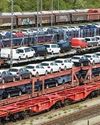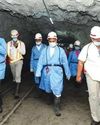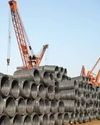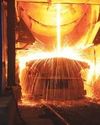India has vast economic potential in the mineral sector owing to its significant and diverse mineral resources.

To a greater extent, the potential of the mining sector’s contribution towards the economic development of the country is influenced by the country’s legal and policy framework. A couple of years ago, the Indian mining sector was facing a lot of constraints that were impeding its steady growth. These included long processing time for application for new rights, delay in getting clearances, unavailability of baseline geoscience data, lack of discretion in the grant of mineral concessions, low spendings on explorations and lack of suitable infrastructure for evacuation of mineral etc.
Some significant transformation has happened in the mineral sector of the country during recent years with the introduction of the National Mineral Exploration Policy (NMEP), 2016, amendments to the Mines and Minerals (Development and Regulation) Act (MMDRA) etc. Measures include making auctions the sole method for the allotment of mineral concessions, introduction of stricter norms for punishment for illegal mining activities, mandating the establishment of the District Mineral Foundation (DMF) and National Mineral Exploration Trust (NMET) etc.
Amendments to the MMDR Act brought transparency in the process of granting mineral concessions. Until July 2018, 43 mineral blocks have been auctioned in the country. Within the auction basket of 43 blocks, 23 limestone, 12 iron ore, three gold, 2 manganese and one each in graphite, bauxite and diamond have been auctioned across the mineral-bearing states. Karnataka has secured a lead in the auctions with seven iron ore blocks and is closely followed by Madhya Pradesh and Rajasthan.
Denne historien er fra December 2018-utgaven av Steel Insights.
Start din 7-dagers gratis prøveperiode på Magzter GOLD for å få tilgang til tusenvis av utvalgte premiumhistorier og 9000+ magasiner og aviser.
Allerede abonnent ? Logg på
Denne historien er fra December 2018-utgaven av Steel Insights.
Start din 7-dagers gratis prøveperiode på Magzter GOLD for å få tilgang til tusenvis av utvalgte premiumhistorier og 9000+ magasiner og aviser.
Allerede abonnent? Logg på

Steel's Net Zero mission
The country’s commitment to achieving Net Zero within a targeted timeframe will now propel its steel sector towards a sustainable future in line with global trends.

Fuel Price Hike, Supply Chain Disruption Hurt Festive Sales
Supply chain disruptions and fuel price hikes have hurt festive sales in a big way as most auto majors posted decline in sales in October.

Seaborne coking coal offers remain range-bound
Seaborne coking coal offers moved in a narrow range in October amid global supply tightness and healthy spot demand.

Global crude steel output down 8% in September
China manufactured 74 mt in September, fall of 21% y-o-y while India’s production went up by 7% to 10 mt.

MOIL embarks on expansion projects
“Even though our country is blessed with manganese ore reserves, we import 50% of the domestic requirement. We have to lower our import dependence and save precious foreign exchange.” Ram Chandra Prasad Singh, Steel Minister

Iron ore handled by major ports down 17% in H1
The 12 major Indian ports handled 27 mt of iron-ore during H1 of 2021, down by 17% from 33 mt recorded for the corresponding period of previous year.

Shrinking China output to boost India exports
“In the third quarter of 2021, the company actively responded to the pressure from external policies, such as production curtailment and dual control system on energy consumption and intensity, as well as coal resource shortage and surging prices.” Baoshan Iron and Steel Co Ltd

Indian Railways' iron-ore handling up 25% in H1
Indian Railways in April-September of 2021 (H1) transported 84 mt of iron ore, up by 25% over 67 mt during April-September 2020.

September crude steel production up 7.2% y-o-y
India’s crude steel production in September 2021 grew 7.2 percent to 9.547 million tons (mt) over September 2020 but was down by 3.2 percent from August 2021 output, provisional steel ministry data showed.

“Five enablers: way forward to sustainable cleaner steel”
Right and scalable technology, appropriate policy guidance by government, access to finance to fund transition, willingness of customers to pay for cleaner products and infrastructure for use of new technologies are the need of the hour for the sustainable and cleaner steel industry, according to Madhulika Sharma, Chief Corporate Sustainability, Tata Steel.